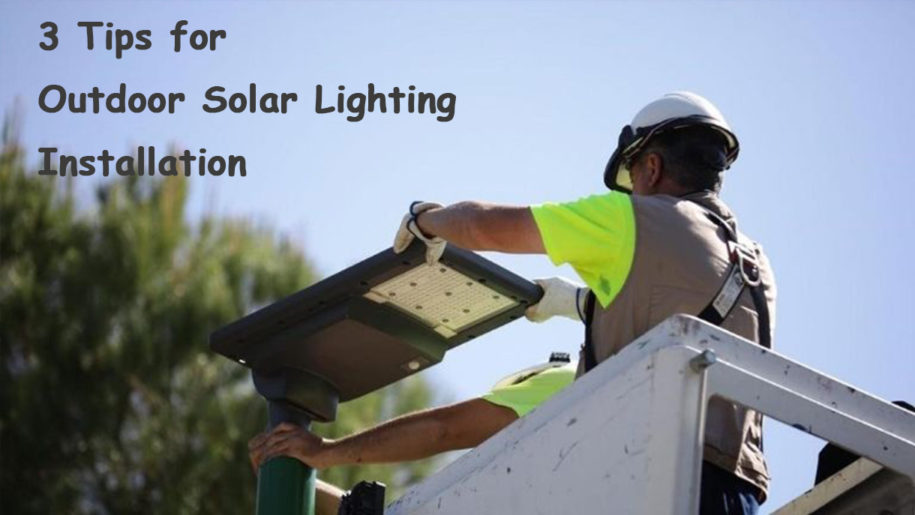3 Tips for Outdoor Solar Lighting Installation
As more and more people look for ways to be more environmentally friendly, there has been an increase in the number of outdoor solar lighting installations being undertaken by government agencies and other organizations. If you are planning to install outdoor solar lighting, it is important to make sure that you have everything you need so that the installation process goes smoothly. Here are some tips on what to consider:
Do you have the building permits for outdoor solar lighting installation?
Before you can install your outdoor solar lighting equipment, you need to obtain a building permit from your local authorities. The permit not only ensures that your installation is safe, but also that it meets all the relevant local codes. For example, the permit will confirm that the framing on your structure is strong enough to support the weight of your solar panels and that the electrical lines running between your panels, charge controller and light fixtures are installed correctly and in compliance with all safety standards.
Before starting your installation project, be sure to check with your local building inspector to find out if there are any permit requirements that you may not be aware of. Some cities and counties do not require permits for low voltage 12 or 24 VDC systems, but it is always best to check beforehand. This way you can be prepared for anything that might come up during the installation process.
What is the minimum amount of daily sunshine you have throughout the year?
Although you may enjoy sunny days during the summer, this doesn’t mean that your solar panels will work well in the winter. In the United States, the amount of sunlight each day varies depending on location. For example, in the northern part of the country, there is only about two hours of sunlight each day during winter, while in the southwest there is over four hours. This means that the number of hours your solar panels can effectively work under will determine how much power can be provided during the shortest days and longest nights every year.
If you’re not sure what size system you need, we can help you develop a customized solution. We’ll make sure the system you purchase is specifically designed to operate the way you need it to, which will always be more effective than going with a “one size fits all” solution. With a custom-sized solution, you’ll have peace of mind knowing that the system will meet your needs and come with a warranty.
Is there much dust, snowfall, or trees in your outdoor solar lighting project’s area?
Even though panels are designed to be self-cleaning, dust or snow can still accumulate and block sunlight. This limits the power your system can produce. To keep your system running at peak performance, you may need to do some additional cleaning or maintenance. A shorter structure or pole-mounted system will make it easier to access the panels for cleaning.
If you want your solar panels to function properly, you need to make sure they have full exposure to sunlight. This means that large shade trees can actually prevent your panels from working as intended, especially if they are evergreens. Any amount of shade will reduce the effectiveness of the panels, so it’s important to have an open area that gets direct sunlight throughout the day.
Are you having trouble with your outdoor solar lighting installation? If you’re experiencing issues with dust, snow, or shading, our solar specialists can help you find a customized solution. Just let us know what’s going on and we’ll be happy to assist you. By taking the time to answer some simple questions, you can avoid many of the common problems that can occur with outdoor solar lighting. Thinking ahead and being prepared for every step of the process will ensure a successful outcome.
When considering an outdoor solar lighting project, it is important to calculate the return on investment (ROI). This can be done by taking into account the total cost of the project, including installation, wiring and energy costs, over the lifespan of the solar lighting system. In most cases, ROI for solar lights falls within 3-7 years. However, some systems may have a quicker or longer ROI. In most cases, solar lighting pays for itself within 3-7 years.
